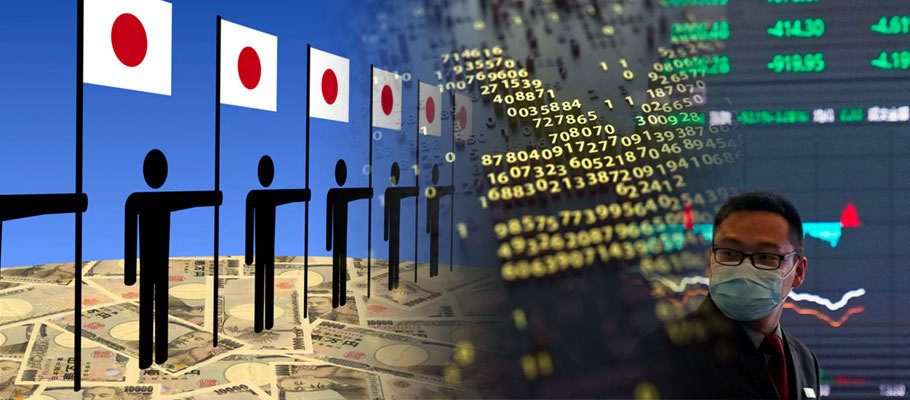
Published: November 20th, 2020
The yen has strengthened its traditional position as a safe haven for global investors throughout the COVID-19 pandemic. Now Japan's fiat is seeing new interest as the one posting the highest yields among the Big Three currencies.
Over the last two months, the yen has peaked several times and hit numerous highs, often in tandem with news related to Democrats taking the white house and breakthroughs in developing a COVID-19 vaccine — developments which, in the past, would have seen the yen weaken as investors interpreted signs of stability as triggers to take on risk and pursue growth.
Analysts believe there are two primary drivers behind the current money wave pouring into yen markets. Japan is a net creditor nation in a period marked by quantitative easing and pandemic-driven stimulus. In a time when governments seem to have the printing presses humming day and night, the yen has held on to its safe-haven credentials.
Alongside confidence in fiscal and monetary policy, the yen’s competitors have less to offer investors. As interest rates in the United States and Europe sink, Japanese government bonds (JGBs) have delivered more significant returns, especially when measured on an inflation-adjusted basis.
American equity markets have offered worthwhile returns, but in currency markets, greenback-backed assets have offered less attractive returns than the JGB market.
The yen's fortunes first began to turn when the business lockdown caused by the pandemic for the U.S. Federal Reserve to engage in more aggressive monetary easing, which in turn decimated returns for dollar-based assets. Japanese investors started turning their backs on international investments as yields on the home front rose above what was available abroad.
With levels this week touching close to 103 per dollar, the yen is up 4 per cent year-over-year. Analysts believe it could slowly climb to 100, a level not seen since 2016. Something has changed in the monetary dynamics between the big three.
Following the original coronavirus outbreak, the U.S. Federal Reserve cut interest rates down to almost zero. As a result, long-term (10-year) bond yields (US10YT=RR) have dropped below 1 per cent, versus 2-3 per cent of investors were seeing before last year.
Investors hedging against currency risk lost their yield advantage when buying U.S. treasuries instead of JGBs, where 10-year nominal yields follow the Bank of Japan’s (BOJ) nil per cent policy target.
Over in the eurozone, outside of a few southern countries, government debt has also been delivering yields less than what JGBs can offer.
Speaking to Bloomberg this week, forex analysts at Goldman Sachs said the BOJ’s zero-rate policy has started to seem less extreme now that so many central banks have printed their currencies down to the lower bounds. Goldman also sees the yen going to 100 over the next year.
If adjusted for inflation expectations, U.S. yields look even less enticing for investors. Real yields, in that case, drop to minus 0.82 per cent. Japanese bonds have, in contrast, held real yields steady at around zero per cent.
If yield differentials continue to tighten, Goldman says, Japan’s private investors will have less incentive to look overseas for growth and risk.
That forecast outcome is already showing signs of becoming a reality. Japanese foreign bond investments have been slowing. Pension fund GPIF, the country’s biggest buyer of non-domestic bonds, is believed to have used up its targeted allocation of foreign bonds.
Analysts at RBS told investors in a note this week that their models have Japanese overseas portfolio allocations shifting into slow gear from now until mid-2021, which will naturally add support to the yen.
Domestic investor purchases of foreign equities are also on the decline, dipping to just 400 billion yen in 2020 versus 2.5 trillion yen in 2019. In 2018 foreign equity purchases came to 7.7 trillion yen and 10 trillion yen in 2017.
Japan’s big corporates have also lost their appetite for overseas acquisitions thanks to the COVID-19 pandemic. Foreign direct investments were down 30% from a year before in the first three quarters of 2020.
Whether Japanese investment outflows will head upward again is thought to hinge on the pace of the U.S. post-pandemic recovery, and whether America can sustain a low-growth, low inflation economy like Japan's.
Amid the positive sentiment are likely challenges that will impact the yen’s attractiveness on forex markets. Data due for release next week is expected to show the country’s exports continuing the declines seen in October, but at a slower pace as global demand rises in some sectors. A recent uptick in COVID cases, however, muddies the outlook.
Exports fell 4.4 per cent in October from the previous year, slowing from the 4.8 per cent decline seen in September.
October imports are expected to drop 8.9 per cent from October 2019, creating a trade surplus of more than 250 billion yen.
Other data due next week includes inflation forecasts, which economists say could show the biggest fall in prices since late 2010.
In the meantime, Japanese Prime Minister Yoshihide Suga has told his government ministers to design a new package of stimulus measures for the winter months. This will be the third round of stimulus following two previous rounds this year worth $2.1 trillion, all intended to ease the impact of the pandemic.
Analysts believe Japan’s consumer price index (CPI), which excludes highly-volatile fresh food pricing, but includes oil products, will have dropped 0.69 per cent in October from the year before; the sharpest decline since early 2011 when CPI also fell by 0.69 per cent.